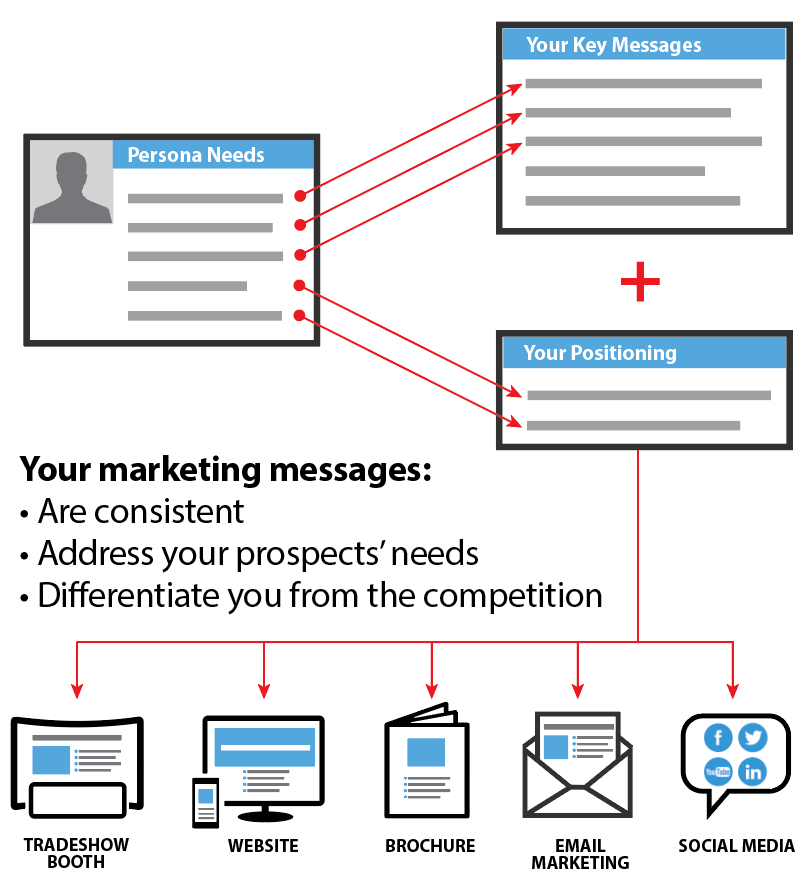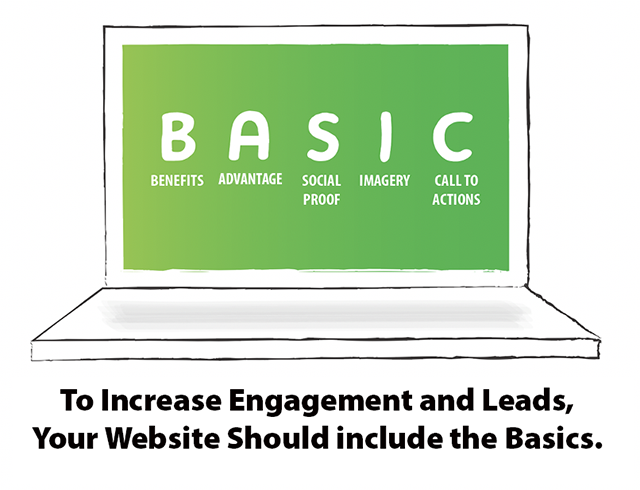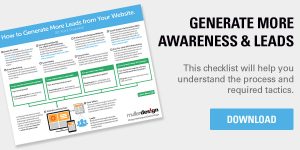
In a recent survey of over 2000 small to mid-sized companies, respondents ranked “generating more leads” as their top marketing priority. In order to increase website leads, you first need to ensure that your website is engaging users by delivering value. When done properly, engagement drives business success. Here are some steps you can take to ensure your site is optimized for user engagement and lead generation:
1. Review Your Target Personas
As with all marketing activities, one should consider who the target audience (persona) is. A persona is a detailed profile of your ideal customer including their demographics, problems, issues, needs, etc.
Many companies make the mistake of building a company-centric website—It’s all about them—their products and services, their story, their history, their team, and so on. Remember, your users have problems they’re trying to solve, so you need to understand what they are, and provide the solutions. A persona helps you focus your site content around the needs of your customer so you can build a user-centric website.
2. Strengthen Your Brand Positioning
Positioning is what comes to mind when a prospect thinks about your company. One of the biggest benefits of strong positioning is differentiation from your competitors. Positioning can also help a decision-maker choose your company over a competitor. A good place to start when evaluating your positioning is to ask this question: “Why should a potential customer choose you rather than your competitors?” The answer to that question is the foundation of your positioning.
After you have a thorough understanding of your personas’ needs, issues, and challenges; and you’ve strengthened your brand positioning, you can then craft website messaging that will differentiate and better engage your prospects.

3. Get back to B-A-S-I-C-S

An effective webpage that engages visitors and converts them into leads include key components summarized by the acronym BASIC.
Benefits—Instead of leading with features of your product or service, focusing on the unique benefits. How your prospect will benefit from using your company, product or service.
Advantage— What is your competitive advantage? What can you offer that your competitors can’t? Why should a prospect choose your product/service rather than a competitor? The answer to this question is the foundation of your brand positioning.
Social Proof— Social proof refers to the influence actions and attitudes that others have on our own behavior. If we see that others have had a good experience with the product or service, we’re more inclined to buy. Social proof plays off of the wisdom of the crowd mentality. A company can use social proof to say “Don’t take our word for it, just ask our customers.” Examples of social proof to consider using on your website include:
- Customer testimonials
- Case studies
- Videos of customers using your product or service
- Industry expert or influencer endorsements
- Product ratings and reviews
- Certifications from authoritative industry groups
Imagery— The quality of your images can make or break your website design, so make sure you’re using high quality, professional photos, illustrations, CAD images, and video that showcase the features and benefits your prospects care about. At the same time, too many high resolution images can reduce your site’s performance and load time. Best-in-class webpages should load within three seconds. Any slower, and visitors may abandon your site, reducing your chances of converting them into leads.
Call to Action—After you’ve attracted a visitor and impressed them with your professional design and brand positioning, make it easy for them to take the next step. Use landing pages and offers to capture leads. Some of our clients’ most effective CTAs include:
- troubleshooting guides
- request for free assessment
- market study summaries
- design guides
- request for a product demo
- schedule a visit
4. Professional Copywriting
Since most users will quickly scan your copy, it’s imperative to make it compelling in order to engage your prospects. Your target personas will help you prioritize what key messages and content to include. The tone of your copy should be professional, persuasive and succinct. Another powerful copywriting genius is the use of stories because they’re memorable, and they tap into our emotions. In lieu of the typical “About Us page, consider telling your company’s story using your customers’ stories and their experiences using your products and services.
5. Professional Photos
Photos can make or break your site. Your website design will only be as good as the quality of your imagery. Hire a professional photographer to take photos of your products, facilities, people, etc. If you’re using computer-generated imagery (such as CAD models) make sure the resolution is high enough so images look crisp on high definition screens. Avoid stock imagery whenever possible, because they too often looked staged or cliché. Custom photography will help you differentiate and make your site look more professional.
6. Add Video and Motion Graphics
Video is easy to consume and more engaging and entertaining—especially on mobile devices. Most users prefer to view videos rather than reading text so make sure to include product videos, testimonials and stories about your customers using your products and services. Mobile phone cameras have revolutionized video, and can help create more realistic, interesting and contextual videos. In the past, company videos tended to be austere and accompanied by a humdrum voice over. So have fun with it—bring prospects into your world—into your facility, showcase your process and products, and introduce your people.
7. Include a Blog
Blog articles allow you to showcase your insights and expertise on various topics, while also helping your site rank higher in the search engines. Organizations that blog have an average of 50% more visitors and 150% more leads than those who don’t. For ideas on what to write about, refer back to your target personas’ issues, needs, and challenges. To increase awareness, once your article is published, you can auto-post it to your social media channels, and use it as a landing page for your online advertising.
When users read a blog article, most likely they’ll read multiple articles, thereby increasing the time on your site and the number of pages viewed—both key engagement indicators. You can also include a compelling lead generating offer or call to action at the end of your blog article.
8. Add Lead Generating Content
How many leads is your website currently generating? In most cases, you can increase this number by simply offering compelling and relevant content that prospects can download in exchange for their name and email address. This tactic has been around for years and is still effective if you can provide useful content such as research, troubleshooting guides, checklists, calculators, product demos, or other content that helps your target persona solve a problem.
9. Differentiate with Custom Design
Have you noticed that many sites look the same? Web design has become homogenized by the introduction of low-cost pre-fabricated templates. One of your main objectives should be to stand out from the crowd—to differentiate from your competitors. One way to do this is with a custom design. It may cost a little more upfront, but considering that your website redesign should last at least five years, amortizing the cost difference is minimal.
Bottom line: Avoid templates.
10. Optimize Usability
Your site has to be easy to use and navigate otherwise prospects will bail. Some important factors to consider include:
- Site load time—Ideal load time is less than two seconds. If your site takes longer than 5 seconds, users will bail.
- Mobile-friendliness—A large percentage of users will access your site on their mob file devices.
- Make sure navigation and buttons are easy to use
- Make sure your site structure enables users to access as much info as possible in the least number of clicks.
If your site checks all or most of these boxes, congratulations! You can rest assure that your website is optimized for engagement and lead generation. Hopefully you’ve found this information useful. If you have questions or need assistance with your site, feel free to contact us. We’re here to help!

